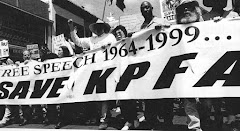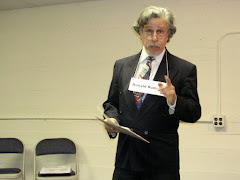 An excerpt from
An excerpt from
Vermont’s Untold History
Long before Europeans set foot in Vermont there were Native Americans of several tribes living along the waters later named Lake Champlain and the Connecticut River. Early villages were established near the areas today known as Newport and Swanton, while Barton Landing was often used as a stopping point for river travel.
Central Vermont wasn’t much inhabited, but it was useful to many tribes for hunting and fishing. The Cossucks came there from the upper half of the Connecticut River region and Pequots traveled from the lower half. Iroqois and Abenakis – part of the Wabernaki Confederacy – lived near Lake Champlain and traveled widely by canoe, sometimes encountering members of the Algonquin and Mohawk tribes who also used the land.
Even after the French and English established settlements north and south of the Abenakis the tribe continued to live at the mouth of the Lamoille River. In 1765, however, they leased a five mile strip of land along the lake, near Swanton, to John Robertson. The agreement said that the land was to be returned after 91 years – in 1856. The tribe then left to winter with the St. Francis tribe on the St. Lawrence River and hunt at Lake Memphremagog.
In 1798 – 30 years later – the tribe sent a delegation to the legislature of Vermont, by then part of the new United States of America. The representatives carried a petition, signed by 20 chiefs on behalf of the seven nations of lower Canada Indians claiming their territory. This included all of the land west of the Green Mountains and between Ticonderoga and the provincial line.
Vermont’s legislature rejected the petition. The argument was that the tribes had forfeited their property by revolting from the English and joining the French. Their title had been lost, the White settlers argued, when the area was ceded to the English by right of conquest over the French. Since the colonists had since defeated the British, they concluded, the land now belonged to the government of Vermont.
Colonial Resistance
In the 18th Century, most Europeans viewed Vermont as an unnamed wilderness between the colonies on New Hampshire and New York. King George had allowed only small portions of it to be given away. However, governors of the bordering colonies saw it as a potentially valuable resource.
New Hampshire Governor Bennington Wentworth took advantage of this ambiguous situation. On the instruction of the King, he gave the first of the “New Hampshire Grants” to the King’s veterans. They in turn sold their holdings to land speculators. Wentworth later gave grants for entire towns. In return he received fees and a large tract of land for himself – in violation of the King’s orders.
Resenting the abuse of his authority, King George instructed the Lieutenant Governor of New York, Cadwallader Colden, to administer the territory. This essentially made the future state a colony of New York – and fair game for its speculators. Since New Hampshire speculators weren’t willing to stand aside, the stage was set for a battle between the two groups, as well as the region’s early White settlers.
Property rights was the rallying cry for New Hampshire grantees defending their homesteads. And their leaders were the Allen family – Ethan, Ira, Heman and Zimri Allen, along with their cousin Remember Baker – which eventually would come to control a third of the land between the Green Mountains and Lake Champlain.
Rebuffed by the British, and forced to pay additional fees to New York to keep their land, early Vermonters turned to direct action. In the eastern section of the territory the first confrontation, in response to a New York plan to replace New England town government with county administration and courts, became known as the Windsor Riot. Forty Windsor residents arrested a New York Sheriff and his posse, thus ending the pursuit of four New Hampshire grantees.
In October 1774, at a county convention in Westminister, the violence at Windsor was rejected. Instead, those gathered advocated “manly, steady and determined procedures” to seek justice. But the expression of such principles apparently didn’t persuade more than a hundred men who stopped 25 New York Sheriff’s deputies from establishing a court six months later. On March 13, 1775, the deputies took the courthouse by force and, in what was called the Westminister Massacre, two New Hampshire grantees were killed. The next morning several hundred residents, led by the Green Mountain Boys, retook the building.
Tactics differed in the western section of the territory. Here farmers were evicted for non-payment of rent. But New Hampshire grantees were determined that the land be returned – by force if necessary. Thus, in July 1771 several hundred men blocked an eviction at the Breckenridge House in Bennington. In the inevitable showdown many of the New York Sheriff’s deputies refused to advance on the settlers.
The resistance activities of the Green Mountain Boys weren’t restricted to Sheriffs or their posses. On January 1, 1775, for instance, they arrested a man named Hough. The charge was that he had “dissuaded people from joining the mob” and accepted the office of Justice of the Peace under New York authority. The punishment of an ad hoc court headed by Ethan Allen was 200 lashes on Hough’s naked back.
The Boys used many types of force, some of which might today be defined as terrorism, to impose their authority. Settlers foolish enough to accept land under the New York Grants were compelled to pay the owner of the title under the “officially” void New Hampshire Grants. In such cases the Grantee was usually a speculator. If a settler refused to pay, Ethan Allen threatened that his “mob would reduce every house to ashes and leave every inhabitant a corpse.”
Conflicted Loyalties
On July 24, 1776 a broad cross-section of colonists in the region gathered in Dorset. The aim of this Dorset Convention was to consider the consequences of the Declaration of Independence signed three weeks earlier. Yet they were also confronted with the adoption of a more conservative Constitution in New York that claimed continued jurisdiction over Vermont.
New York’s Constitution called for the administration of the Green Mountain colony, as well as land granting authority and the power to collect rents. It restricted the right to vote to male property owners and called for life-long appointment of judges. Such choices in New York effectively ended debate in Vermont over secession from the Empire State. In a unanimous vote, New Hampshire grantees decided to form a separate district. At a later convention the name New Connecticut was selected. On June 4, 1777 the name of the region was changed to Vermont.
The Dorset Convention declared a basic allegiance with the revolution underway, and agreed that the men of Vermont would join the fight. But the support would be withdrawn, said the delegates, if people were placed under New York command “in such a manner to be detrimental to our private property.”
Many Green Mountain Boys were eager to please the Constitutional Congress, a position geared toward winning future statehood. Their plan was to capture Montreal from the General Frederick Haldimand, commander of the British army in the colonies. But two invasions failed, and so did negotiations with the Congress. Vermont congressional representatives who owned land in Vermont had been joined by powerful New York and New Hampshire interests in opposition to Vermont’s statehood proposal.
Action by the Vermont Assembly didn’t help much. It had accepted the petition of 16 disenfranchised frontier towns in New Hampshire that wanted to join Vermont. Heavy pressure from Ira Allen and threats of attack from the Congress eventually persuaded the Assembly to pull Vermont’s border back to the Connecticut River.
Ethan Allen wasn’t chosen to lead the Green Mountain Boys in their invasion of Montreal. But the rejected rebel marched with the troops anyway– without official rank or position. And during the mission he broke discipline, leading a group of soldiers into the arms of the opposition. Allen’s individualism – useful in raising the rebellion – was proving less helpful in waging a revolution.
The Allens are often talked about as “founding fathers.” Many people believe they were among the signers of the Declaration of Independence. In reality, however, Ira Allen received political overtures from the British. And rather than rejecting them, as a revolutionary patriot might, he opened up the first of the Haldimand negotiations. Allen basically offered the general Vermont support, as long as the British recognized and protected Vermont independence. He asked Haldimand to request autonomy for the region from his parliament, the proposal already rejected by the Continental Congress.
Disappointed with treatment by both sides in the revolutionary war, Vermont’s soldiers eventually marched home and the state adopted a stance of neutrality while continuing negotiations for independence.
The Allens knew that their commercial interests would be best served by an independent state under their control. Thus, the “radical” Allens formed a strange alliance with British loyalists who remained in the colonies. They wooed loyalists into settling within the Allen-controlled Champlain Valley. Here they would be near British-controlled Quebec, free from persecution. As a result, Vermont became a haven for deserters from both the British and colonial armies.
Despite all the politicking, the Allens made political enemies on their road to wealth and power. With economic power as a foundation they ruled the Green Mountains politically through their agent – Thomas Chittenden, first governor of the state. Many people resented the grip of the Allens on the new state. But Chittenden was both less known and less offensive to the voters. As a result his chances of election were better. He balanced the factions groping for influence during negotiations with the Brits and the new Congress.
Bargaining with the British ended with the conclusion of the revolution, as least for the moment. In 1783 American and British representatives signed the Treaty of Paris. The map accompanying the agreement indicated that Vermont was outside the protective boundary of Britain’s Canada. However, this didn’t obligate Vermonters to join the American fold, and the state’s loyalty to the new government remained in doubt until the War of 1812.
After the Revolution
In the western part of the state, the region in which the Allens had the greatest influence, commercial ties were maintained with Quebec. Timber, potash and meat went through the Richelieu rapids to Canadian markets. On the eastern side folks shipped their goods south, down the Connecticut River to the American states.
The Allens wanted to build ties with Quebec. Leading citizens in the east and southwest disagreed. This group of land speculators, merchants, lawyers, and Yorkers openly challenged the Allens and their governor. They wanted Vermont for themselves. Rebellions threatened the power of the Allen family for more than three decades after the American Revolution.
Farmers and workers had their own concerns. The state had an excess of merchants who were draining the region’s wealth, they complained. They also opposed the harsh tactics used by lawyers and sheriffs who foreclosed on settlers. Through calculated, expensive legal proceedings sponsored by the state government, many settlers were forced further into debt. Merchants and land speculators were starting to run Vermont both economically and politically. But many other Vermonters were hit particularly hard in the post-revolutionary depression.
They were also being forced into combat, opposing their new rulers just as they had their previous feudal overseers. In a raid on a creditor’s house in October 1783, for example, a group of Benningtonians seized notes, obligations and bonds. Vermonters also tried to close the courts of Windsor and Rutland counties in November 1786, mainly in order to prevent adjudication of law suits.
A few years later the state experienced its first Watergate-style scandal. Ira Allen was caught with his hand in the till. He had secured ownership of the Town of Woodbridge – now called Highgate – as a favor from Governor Chittenden. In 1789 the state Assembly investigated. The outcome: Ira lost much of his influence and Chittenden lost his next election.
Led by the Allens, the liberal wing of Vermont’s new power structure was weakened by these developments. Meanwhile, conservative leaders from other parts of the state began to gain control. This shift was accompanied by the move toward statehood. On January 10, 1791, the Vermont Convention on Ratification of the Constitution voted to ratify. On February 18, the US Congress held its vote to admit this quirky region as the 14th state. At this point there were 85,539 people living in 185 towns, according to a general census. But their leaders quickly stacked the deck, pushing to restrict voting rights to property owners.
Battles between the warring wings of the emerging ruling class for control of the state were far from over. Ethan Allen died in 1789, but his brother Ira visited Britain to establish an alliance with the old Empire. Brother Ebenezer settled in Quebec. The family was trying to orchestrate a comeback.
Around this time Ira went to Britain to bargain Vermont loyalty in exchange for a British-built canal around the Richelieu rapids. The project was designed to improve his commercial relations, as well as help Britain to defend Canada from France and the US in their latest war. But a shipload of guns, purchased in Paris, resulted in Ira’s arrest in Britain for possession of enemy weapons. His diplomatic mission ended abruptly.
With the aid of American authorities, Ira was eventually released, yet still pledged allegiance to England. Later he was jailed in France for a year, released only after he swore allegiance to revolutionary France. When he finally returned to Vermont he was an outcast – and in serious debt. Ira Allen died a pauper in Philadelphia.
This is an edited excerpt from Vermont’s Untold History: Labor and Capital in the Green Mountains, originally published in 1976 and written by Greg Guma and Robert Mueller.
































No comments:
Post a Comment